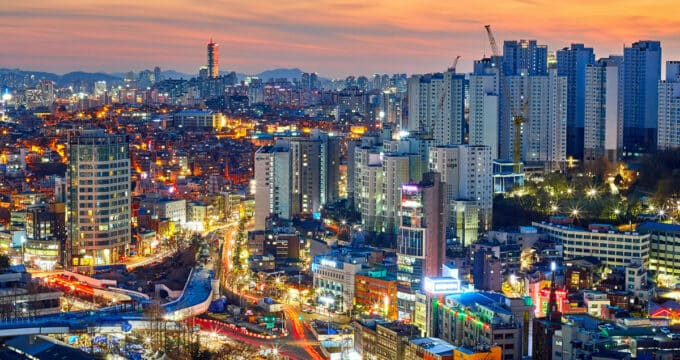Challenges in Vietnamese higher education contributing to demand for study abroad
A youthful population and a growing economy continue to fuel Vietnam’s status as one of the most important emerging education markets in Asia. But higher education capacity is another key factor driving demand for study abroad in the country, one that led as many as 125,000 Vietnamese students to pursue studies overseas in 2013. Vietnam’s higher education system has grown quickly over the last 15 years. Between 2001 and 2011, an average of eight new universities and 12 colleges were established each year, leading to a total of 163 universities and 223 colleges by 2010/11. Much of the growth in the system since the year 2000 has been in the form of private-sector institutions, particularly smaller colleges with more narrowly focused curricula. Tertiary enrolment has also grown significantly over the same period. Dr Martin Hayden, the Dean of the School of Education at Southern Cross University, has written extensively on the Vietnamese system and notes: "The enrolment rate increased from 162 students per 10,000 persons in 2001 to 251 students per 10,000 persons in 2011. This growth trajectory will continue – by 2020, the enrolment rate is projected to be more than 400 students per 10,000 persons." Total tertiary enrolment more than tripled over this period from 732,187 students in 2000 to 2.25 million in 2013 – the gross enrolment ratio, meanwhile, increased from 9.33% to 24.58% during those same years.
The forecast that Dr Hayden references above suggests that total enrolment could exceed four million students by 2020.
The question of quality
This rapid expansion of capacity has been accompanied by persistent concerns as to the quality of higher education in the country, and it is widely acknowledged within Vietnam and among international observers that the system requires significant improvements in both the standards of its programmes and outcomes for graduates. A World Bank project briefing from 2009 highlights some important challenges with respect to employability of graduates and quality controls in the rapidly expanding Vietnamese system, noting that, "Building a higher education system in Vietnam that is innovative, responsive to the demands of the market and of high quality is essential to the economic growth and development of Vietnam." Vietnamese higher education is now struggling with a range of structural and systemic challenges. On the ground, with some familiar challenges for any rapidly expanding system, the country is particularly grappling with dramatic growth in class size and, on a related note, a chronic shortage of qualified faculty. As World Education News and Reviews (WENR) reported in 2010, "The rapid growth in student numbers has not been matched by a similar expansion of the faculty body. In the 22-year period between 1987 and 2009, the number of students has increased 13 times, the number of institutions of higher education by a factor of 3.3 and the number of lecturers just threefold. Student to teacher ratios have increased from 6.6:1 in 1987 to 28:1 in 2009… Of equal concern to lecturer shortages is lecturer quality. According to official government statistics, the total number of lecturers at both colleges and universities has grown from 20,112 in 1997 to 61,190 in 2009, while the number with doctoral degrees has grown from just 2,041 to 6,217 over the same period. Those with masters degrees have increased from 3,802 in 1997 to 24,831 in 2009, meaning that more than 50% of tertiary-level instructors do not have graduate qualifications."
Building a world-class university
The challenge facing Vietnam’s educators and policymakers is amplified by the underlying complexity of the system itself. "Vietnam’s higher education system is extraordinarily complex," says Dr Hayden. "There are national universities, regional universities, research institutes, academies, comprehensive universities, specialised universities, technical and vocational colleges, teacher training colleges, community colleges and professional-secondary schools."
"The differences between these types of institutions are not always evident, and the system as a whole does not conform consistently to any globally recognised qualifications structure."
In terms of formal structure, a government decree from August 2000 provides for three types of higher education institutions:
- "Đại học," or universities, are multidisciplinary institutions with some research capacity and with programmes in several fields of study.
- "Trường Đại học," or senior colleges, are more narrowly focused in their programme offerings, to the point where they may provide programmes in only a single subject area.
- "Học viện," or institutes, are often also narrowly focused by programme area but may also have some specialised research capacity.
Given the rapid growth of higher education since 2000, and the acknowledged challenges vis-à-vis academic quality, the government has signaled its intention to focus on reining in some of this complexity: consolidating the current system, strengthening existing institutions, and improving system administration and quality controls. In recent years, the Ministry of Education and Training has moved to cap class sizes and has expanded scholarship support for advanced studies abroad at the master’s and PhD level. It has also supported the establishment of formal partnerships between Vietnamese institutions and universities abroad to strengthen curricula in 23 targeted science and technology subject areas. The government has also moved to cool the further expansion of the system by placing a halt on proposals to establish new universities and colleges as of 20 March 2014. It also signalled at the time its intention to strengthen administrative and regulatory structures for higher education. Most recently, Prime Minister Nguyen Tan Dung has announced a freeze on new international collaborations to open or expand universities until 2020. Vietnam has opened three such international agreements in recent years under the auspices of the New Model University Project (NMUP). Initiated in the late-2000s with funding support from the World Bank and the Asian Development Bank, the NMUP anticipated the formation of four new universities, each supported by a partner country and following an established higher education model from that country with some adaptation for delivery in Vietnam. To date, three such international partnerships have been established, leading to creation of three new public universities:
- The Vietnamese German University (VGU), which operates in partnership with a German state-level government and a consortium of 30 German universities.
- The University of Science and Technology of Hanoi (USTH), which operates in partnership with the French government and a consortium of French institutions.
- Most recently, the Vietnam-Japan University was established via a 2014 agreement between the Vietnamese and Japanese governments.
Under the NMUP, the government has set an ambitious goal to have each of the three new institutions ranked among the world’s top 200 universities by 2020. The scale of this challenge is underscored by the fact that at present only one Vietnamese institution, Vietnam National University (#191), ranks in the top 200 in the 2015 QS University Rankings for Asia, and none in the QS University World Rankings for 2014. In last month’s announcement, Prime Minister Nguyen indicated a shift in government policy away from the establishment of any additional universities under NMUP (at least for the next several years) and toward an increased emphasis on strengthening the quality and ranking of two national universities in Hanoi and Ho Chi Minh City along with the three existing NMUP institutions. The Prime Minister’s statement also reinforced the government’s commitment to seeing each of these universities within the top tier of global rankings. These are important developments for the future of Vietnamese education, and, by extension, for Vietnam itself. As is the case in other key education markets, the reforms, investments, and improvements anticipated by current government policy will also play an important role in shaping the Vietnamese demand for study abroad now and in the future.
















